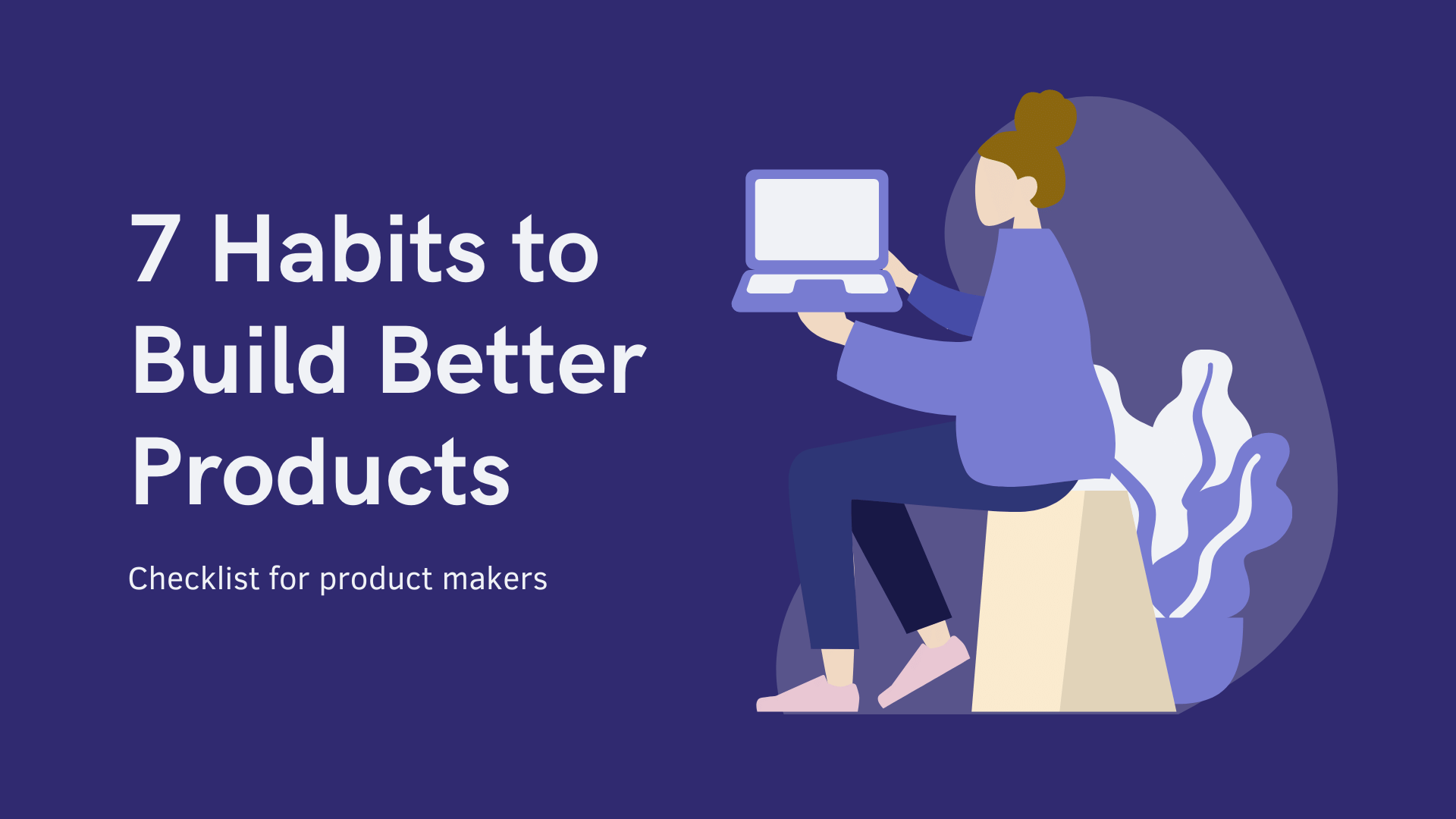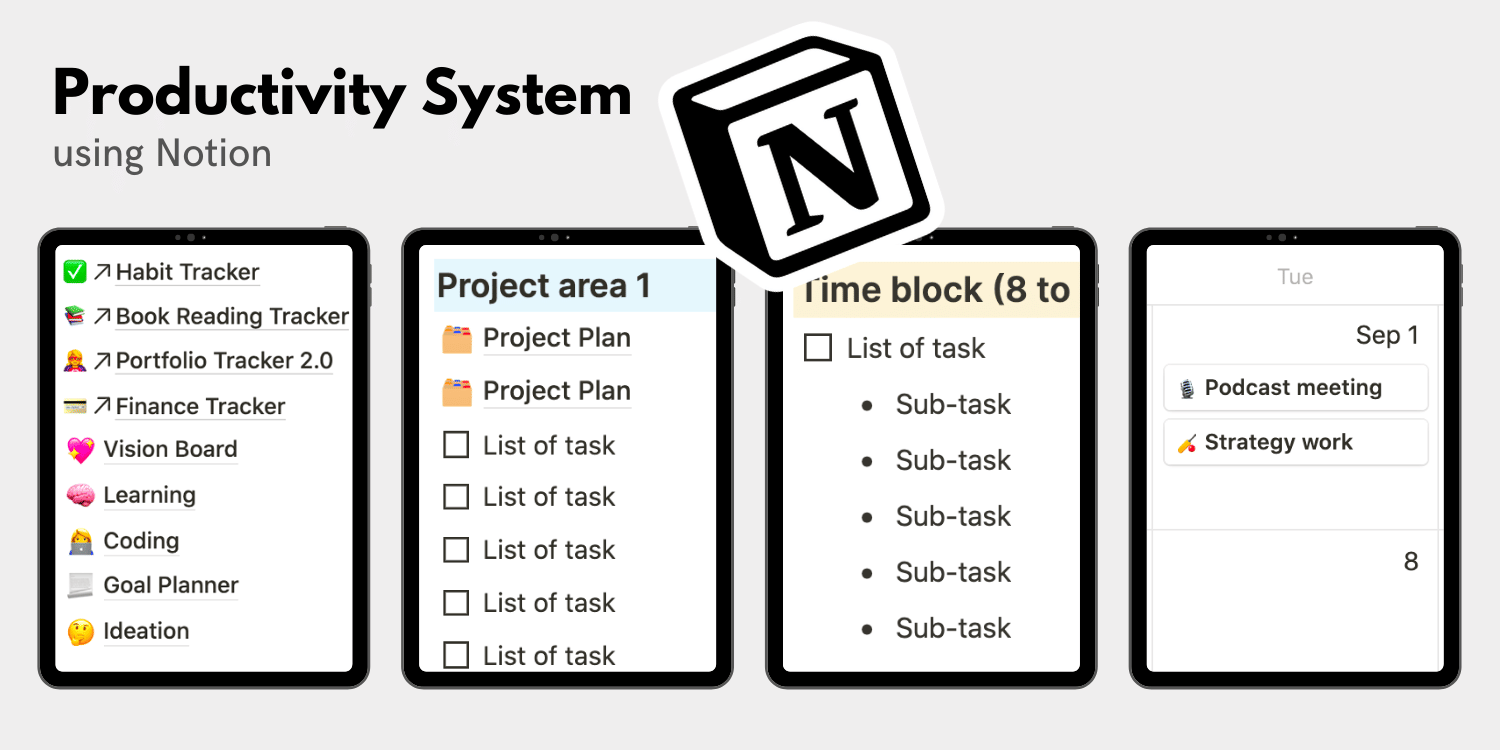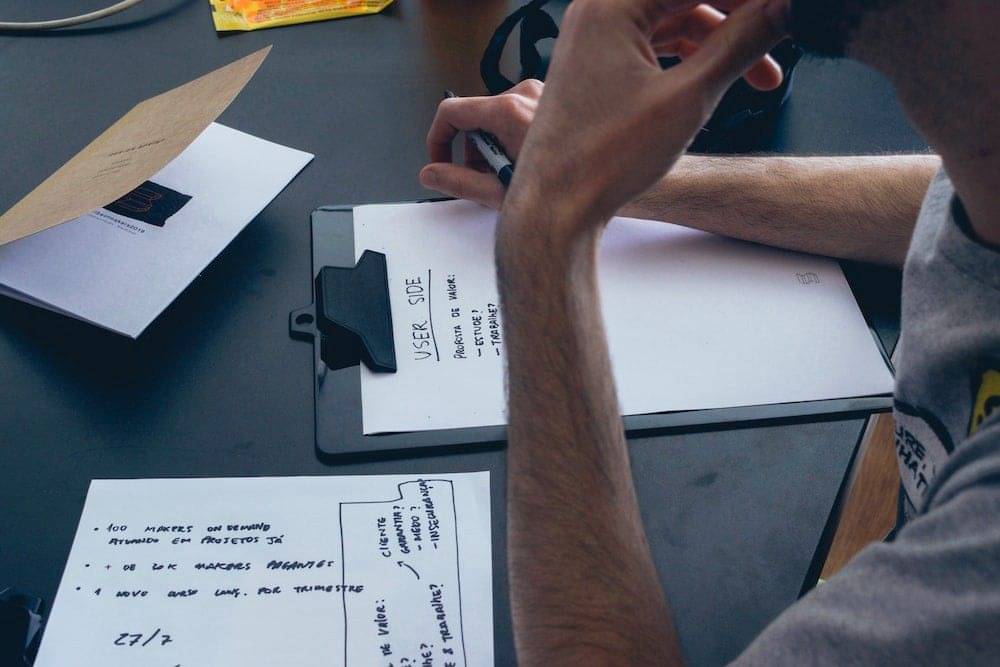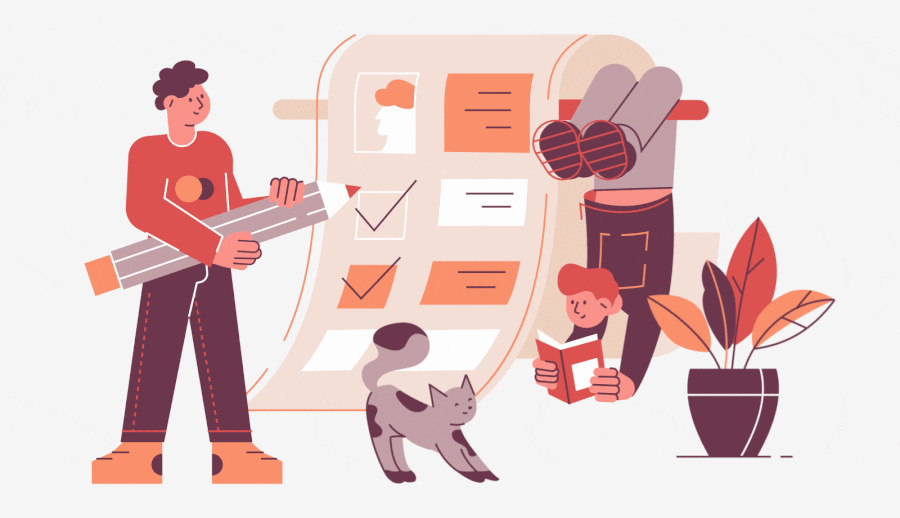Note: This article is part of my toolkit newsletters↗️ where I share resources about building things. Join me 🙂
As a product builder↗️, I build micro tools to solve my own problems. For example article tool, event app, meal box app, finance tracker, SaaS tracker, Notion portfolio, and habit tracker.
I’m working full-time building things, whether it’s building for companies where I’m hired to solve problems using product thinking; building startup templates at Product2kit and my own MVP, or guiding makers to build products.
After building and launching multiple products, I have decided to share 7 product habits that have helped me to quickly turn problems into products.
For context: I use the term ‘product builder’ to refer to professionals who are involved in building and launching technology products such as product founders, makers, managers, designers, and developers.
1. Solve your own problem 🤔
When it comes to finding product ideas to build, it’s important to think about the problems to solve and not finding the next big fancy ideas. As Michael Seibel (partner at Y Combinator) said in an interview:
“Work on a problem you have personal experiences with.”
“I see people go down this trap: I’m gonna work on something that is someone else’s problem, I’m gonna come up with fake insights in my head based on very little experience. And then they realize the problem is harder and then they pivot.”
“When you work on something you don’t know, you often find yourself under this question of — Should a product exist at all?”
When you solve your own problem:
- You know this is a valid problem (not a made-up one) based on first-hand experiences
- You have the insights on why you need this solution and what solution works best
- You can become your first user and build something useful for yourself
- Then you find other people who have the same problem and the problem is intense enough to use the products
- When you enjoy building the products, you will also enjoy growing it and become a profitable startup
Products that I’ve built to solve my own problem
- FAQ Website — Batch similar FAQs that I received in DM and answer all of them in one place
- Article tool —Summarize online articles in 5 sentences without reading all the articles from start to finish.
- Product2kit — Pre-made startup templates that I can easily clone and build new projects without starting from scratch
- and more

Letter
2. Start with the users, not tools 🙍♂️
Whenever I receive Zoom calls from makers for 1:1 Product Session, I often get these “don’t start with” questions. And my answers:
Don’t start with
- What tools and framework should I use to build this type of app?
- Should I use API or Artificial Intelligence in my app feature?
- Should I use no-code or code?
Do start with
- Who has the problem?
- What do users want to accomplish?
- What are the existing alternatives and why will users use your solution?
“You have to start with the customer experience and work backwards to the technology” — Steve Jobs
This approach is about prioritizing user needs as the starting point and then working backward to deliver the technical solutions (i.e. app features and functionalities) to the problem your users have.
Once you understand your users, the use case, you can start to find the right tools and technology stack to build the app functionalities. As a result, you are more likely to building something that people want.
3. Talk to users 🙊
So, what app features should I build? Should I focus on building for Group X or Group Y? Do people care about this offering? Remember: We don’t know the answers until we talk to users and ask.
Here’s when the customer discovery and research process comes in. Reach out to your target persona and ask them how do they go through their day; their workflow; preferred way to solve this problem, challenges, and frustrations.
Don’t talk without a plan
- Theme your persona, make a plan for how many users you want to interview, and make a schedule
- Reach out to target users. Or recruit users for interview using these platforms — Respondent, User Interviews
- Plan your questions, ask open-ended questions
- Collect feedback, theme the feedback and analyze feedback
- Rank the most expressed statements and prioritize features to ship
4. Prioritize 🛳
Avoid falling into this trap: “Let me build as many app features as possible.” Effective product builders create something that people want, therefore, they prioritize building things that help to solve real pain points of the users.

How to prioritize?
- Understand the types/stages of validation you’re currently at. Are you validating a problem? A solution? A feature? Value proposition?
- Continue point #3 above: user research, collect feedback, analyze, rank.
- Prioritize based on objectives, problems to solve, not feature ideas.
- Create a product roadmap using Trello, Productboard, ProdPad
5. Be hacky 😈
Let’s talk about building products. Instead of chasing the next trendy tool, a new programming language or framework — try to hack together a prototype or MVP using off-the-shelf solutions.
How to be hacky?
- Find no-code or low-code tools to build the frontend, backend and automate the technical workflow without spending months to code a product (when you’re just testing out ideas)
- Don’t start from scratch, use startup MVP templates to save time
- Use what you have and what you know to build what you need
- Take execution risk (launch, test, fail, improve) to minimize assumption risks (building something that nobody wants)
How far can you build with no-code? I recently shared in this Tweet:

6. Track your side projects 🚀
How to stay consistent in building products? When I first started building products, I made a habit to track my side projects and showcase my work publicly.
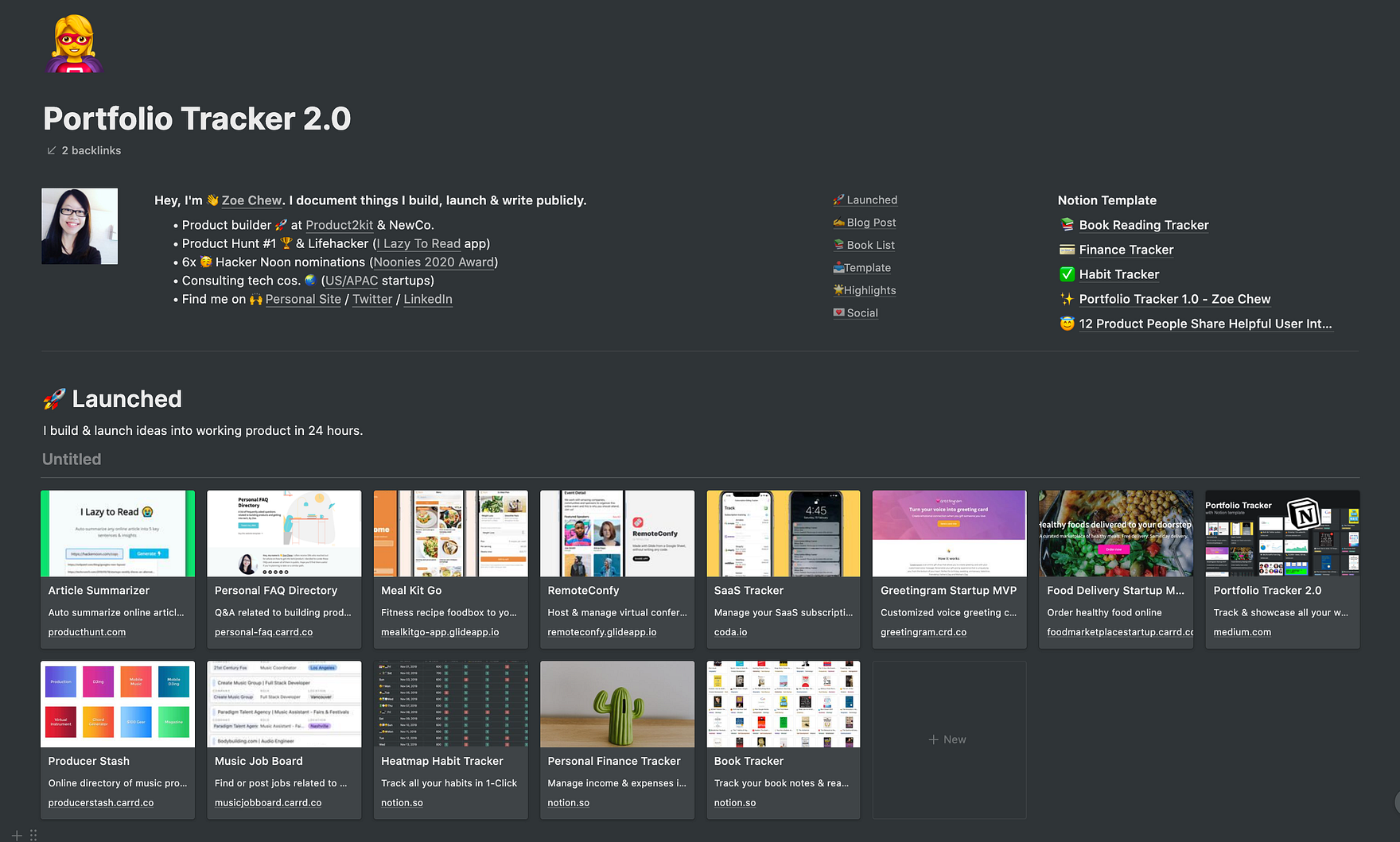
It creates self-accountability to ship consistently and helps me stay motivated. It’s also a great way to document your learning so when you look back on how you started, you’re able to appreciate your journey.
How to start tracking your projects?
- I use Carrd and Notion to track my projects. I’d recommend using tools that are easy to use so that you are more likely to maintain the portfolio and update it with new content.
- Examples of my portfolio: Personal Site & Portfolio Tracker 2.0
- Start adding your products, blogs, books, showcase, and learnings
7. Build an audience 🥳
Create a potential user base EVEN before you launch your product, marketing campaign, or a company you will start in the future. This habit can maximize your go-to-market strategy for your current and future projects.
It’s more costly to acquire customers from scratch than to market to an existing audience that you’ve built close relationships with.
Having an audience also allows you to source ideas, run user research, asking for feedback, and finding user behavior patterns through discussions.
Here’s what I do: I’m growing Twitter (4,990+ followers) by sharing my resources, writing articles on Medium (940+ followers), distributing content through Substack (1,900 email subscribers), LinkedIn, and publications.
How to start building an audience?
- You can start by building a personal/company brand, a social media following, an email list, or an online community.
- Create content and provide values to spark conversations with potential customers. Start sharing your expertise, knowledge, journey, progress, story, success, failure, and work.
- Pick your distribution channel and stick through to growing it: Twitter, YouTube, Discord, Slack, Medium, LinkedIn, email list, etc.
- Stay in the conversation, create engagement to increase your audience “retention rate”. Encourage them to share their thoughts, co-create/collaborate, support, discuss, and bounce ideas.

